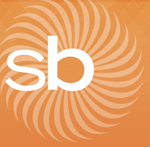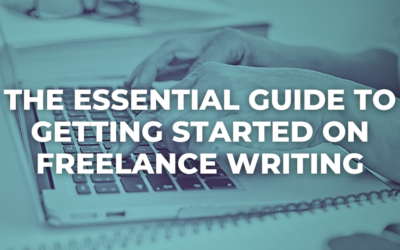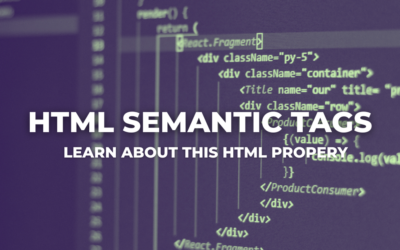 Once again we bring you one of our interviews with design and web professionals, as always our goal is to provide some educational and informative insight into how people work, what inspires them and how they got where they are. This month we’re talking with Dan Rubin, a graphic designer, web developer, musician and Apple enthusiast living and working in Fort Lauderdale, Florida (US). He’s a founder and principal of Webgraph (a design and branding studio), co-founder of Sidebar Creative (a design collective) and Sinelogic (UI and usability consulting) as well as a web standards consultant, author and speaker. Dan also writes his blog SuperfluousBanter.
Once again we bring you one of our interviews with design and web professionals, as always our goal is to provide some educational and informative insight into how people work, what inspires them and how they got where they are. This month we’re talking with Dan Rubin, a graphic designer, web developer, musician and Apple enthusiast living and working in Fort Lauderdale, Florida (US). He’s a founder and principal of Webgraph (a design and branding studio), co-founder of Sidebar Creative (a design collective) and Sinelogic (UI and usability consulting) as well as a web standards consultant, author and speaker. Dan also writes his blog SuperfluousBanter.
How or where do you find inspiration?
That’s the million dollar question right there 🙂 Inspiration comes in many different forms for me, some of them consistent, some of them not. Often I get inspired by travel, and at a simpler level by changing my surroundings and environment. Sometimes it’s a book, sometimes a magazine or advertisement, other times inspiration comes seemingly at random in the shower, or when I’m out for a drive or a bike ride. One thing remains constant: I’m always on the lookout for new sources of inspiration, and always ready to be surprised when a new burst hits me.
Who is the biggest influence on your work right now?
I’m not sure I could name a single individual as an influence, but I can definitely say that photography is playing a huge role for me right now. And not just as a resource, using stock or custom photography (which are always good sources for inspiration and influence), but rather becoming the photographer, and using it as a natural extension of my creative interests. I’m also making the transition from a designer who simply uses type in their designs, to someone who creates the type—the next few years will be an exploration in type design, focusing on designing typefaces that I want to use in my own work. These interests are already influencing my design style, and the thought process surrounding solving design problems.
Where are your “design roots� Print or Web?
As a designer, I started in print with an interest in branding and typography. Before that, I worked with oils and watercolours when I was younger, where I learned much of my initial color theory, perspective, and composition. I was involved with the internet before Mosaic (the first web browser) was released, so my involvement with the web as a designer has been since the beginning.
How important is it to know the history of design?
It’s important to me, but that doesn’t mean everyone has to be interested. Designers can be just as creative without knowing where the industry has come from; it’s just another perspective you can add to your arsenal of information that gets referenced whenever you think about design.
Serif or Sans?
Egyptian. Alright, that’s a snarky type-geek answer, so I’d have to say sans, but I really don’t discriminate: I’m an equal opportunity typographer 🙂
Do you code and design? Are you a “Hybrid�
I’m happy to say yes, I’m a hybrid. Though I learned about front-end code as a means to an end; I’m a designer first and foremost, and will learn what I have to in order to see my designs properly brought to fruition. I think a responsible designer needs to understand the inner workings of each medium in which they decide to publish. Print designers need to know ink, paper and sometimes binding, folding and gluing; product designers need to understand materials, manufacturing processes, engineering; photographers (whom I consider similar to visual designers; they just use a different toolset) need to know their cameras, film, processing, printing, even framing and matting for presentation. Code isn’t that different conceptually—just another series of tools and processes, and understanding them allows you to produce better work.
What’s your favorite part of the creative process?
The end. I’m not kidding either: while every part of the process has its own specific flavour of adrenaline, its own challenges and successes, nothing compares to the completion, the culmination of all that has lead up to the end result, the sum of all its parts.
What makes your creative process different from everybody else?
Quite possibly that I don’t have one single “process†that I always follow. I tend to approach every project differently, which does present some problems on occasion (see my comments about inspiration above), but I feel as though it protects me from falling into any behavioral patterns that may limit my creativity. Then again, you could say that not having a pattern becomes its own pattern, of sorts, over time…
What do you see as the single biggest shift in the evolution of design over the past 5 years?
Design hasn’t evolved lately, we aren’t seeing any major paradigm shifts aside from the “web 2.0†label, but just because that has certain visual elements associated with it doesn’t mark a specific shift in design. Perhaps “web design†has changed—there is a marked increase in the use of grids, better typography, more user-centric design—but it’s still a young medium, and rapid change is even more prevalent online than in traditional mediums. What I’d like to see is more of the same gradual improvement, and see where it takes us in another 10 years.
What’s the difference between User Experience and User Interface design?
I think the main difference is the label and what goes on your business card. Responsible interface designers are designing the experience, they just don’t always realize it. Many people work as UI designers and only make things pretty, but even if you have another person on the team whose job it is to think through the interactions and experience, it really ought to be something considered right along with the design. We can segment our industry as much as we want with labels and titles, but that doesn’t mean it’s a good idea or even makes a positive difference.
What makes one a web design professional?
If you can pay your bills with web design, you are a professional. The problem is, people start to assume competency when they hear or read the word “professionalâ€, when really all it means is that you do it for a living.
What are designers/developers doing right (or wrong) in the web 2.0 world?
Let’s see, too many drop shadows and gradients (each of the “obvious†variety—come on people, let’s have some subtlety here!), Lightbox-style pop-ups infiltrating every possible area of many web apps, and designing mobile apps as an afterthought, if at all. That’s a short list of what first comes to mind, though I could go on for hours if you had the room and your readers had the patience…
The main issue I have is that designers are always getting on various bandwagons, based on what seems to be popular (and too often, “popular†is based on what people are investing in). Simplicity is always difficult to achieve as a designer in any medium, and there is never enough of it going around; I’d love to see more “lessâ€.
What’s your favorite flavor of design or development programs/languages?
Oh goodness, there are a lot of categories in that question 😉 Though I’d love to like using Fireworks, I still come back to Photoshop; Textmate and CSS Edit currently have my heart for XHTML/CSS/JS work, and as languages/frameworks go, I’m determined to become proficient in Django over the coming months.
What is your favorite book?
That’s a difficult decision to make, since I’ve read so many wonderful books, and am in the process of reading many more. Since I’d rather answer than abstain, the book I’ve enjoyed reading (and telling people about) the most in the last few years has to be Blink, by Malcolm Gladwell.
What is your favorite movie?
Another tough choice, but I’ll go with The Fifth Element at this particular moment in time.
Who is your favorite musical artist (or What musical artist are you listening to the most right now?)
As a musician, I’ve always had a hard time choosing favorites, as I listen to so many artists across multiple genres and time periods. So, as with the two previous questions, I’ll answer based on current context: My favorite jazz group at the moment are Lambert, Hendricks and Ross, electronic has to be Massive Attack, and contemporary is, somehow, Maroon 5 (no jokes from the peanut gallery please…). And of course I’ll listen to The Beatles any time, any place.
Dan Rubin is a graphic designer, web developer, musician and Apple enthusiast living and working in Fort Lauderdale, Florida (US). He’s a founder and principal of Webgraph (a design and branding studio), co-founder of Sidebar Creative (a design collective) and Sinelogic (UI and usability consulting) as well as a web standards consultant, author and speaker. Dan also writes his blog SuperfluousBanter.




0 Comments